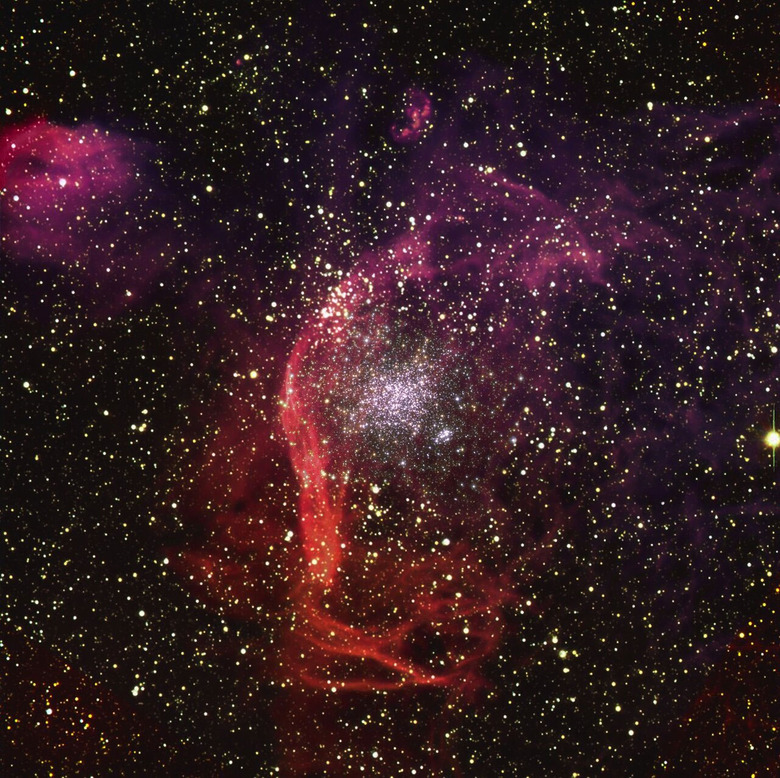ESO VLT Discovers A Black Hole Inside A Distant Star Cluster
The European Southern Observatory (ESO) has used its Very Large Telescope (VLT) to discover a previously unknown black hole outside the Milky Way. Astronomers discovered the black hole by investigating how it influenced a star nearby. The discovery marks the first time the detection method has been used to discover a black hole outside our galaxy.The black hole was discovered in a star cluster containing thousands of stars about 160,000 light-years away from Earth. The cluster, called NGC 1850, contains thousands of stars and is in the Large Magellanic Cloud, a galactic neighbor to the Milky Way. During the investigation, researchers looked at every star in the cluster, looking for evidence of the presence of black holes without being able to see a black hole directly.
Scientists believe since they have used the discovery to find a black hole, the same technique can now be applied to discovering hidden black holes in other galaxies. The black hole the team discovered is about 11 times more massive than the sun, and it was discovered by its gravitational influence on the star orbiting the black hole, which is about five times as massive as the sun.
The typical method of discovering black holes relies on detecting the x-ray glow they emit as they consume matter or gravitational waves generated as black holes collide with each other or neutron stars. However, the challenge in discovering small stellar-mass black holes is that they don't produce gravitational waves or x-rays. The research team says most black holes in this mass category are only discovered dynamically. Researcher Stefan Dreizler says when black holes are stellar-mass or in a system with the star, the black hole impacts the star's motion in detectable ways allowing the small black holes to be discovered utilizing sophisticated instruments.
This method of discovery is called the dynamical method and could enable astronomers to discover many more black holes in an effort to learn more about them. In addition, study co-authors say every detection of a black hole of this type helps improve the understanding of stellar clusters and black holes that live inside them. Another first in this discovery is that it marks the first time a black hole has been found in a young cluster of stars.

The cluster in question is only about 100 million years old, which is very young on a cosmic scale. The dynamical method could allow the discovery of similar black holes in other clusters and contribute to the understanding of how black holes grow by feeding on stars or merging with other black holes. To understand the aging process, astronomers also want to compare younger black holes with more mature black holes in older star clusters.
In the research, data was collected over 24 months utilizing the Multi Unit Spectroscopic Explorer (MUSE) mounted on the ESO VLT. The observatory is in the Atacama Desert in Chile. MUSE allows astronomers to observe crowded areas, including the innermost regions of stellar clusters. Using the instrument, the light of every star in the vicinity can be analyzed, providing information on thousands of stars "in one shot," providing at least ten times more data than any other instrument.
The team was able to spot a star in the cluster with peculiar motion signaling the presence of the black hole. The massive black hole was then measured utilizing data from the Optical Gravitational Lensing Experiment operated by the University of Warsaw and from the Hubble Space Telescope providing astronomers with measurements of the mass of the black hole and helping to confirm their findings.
